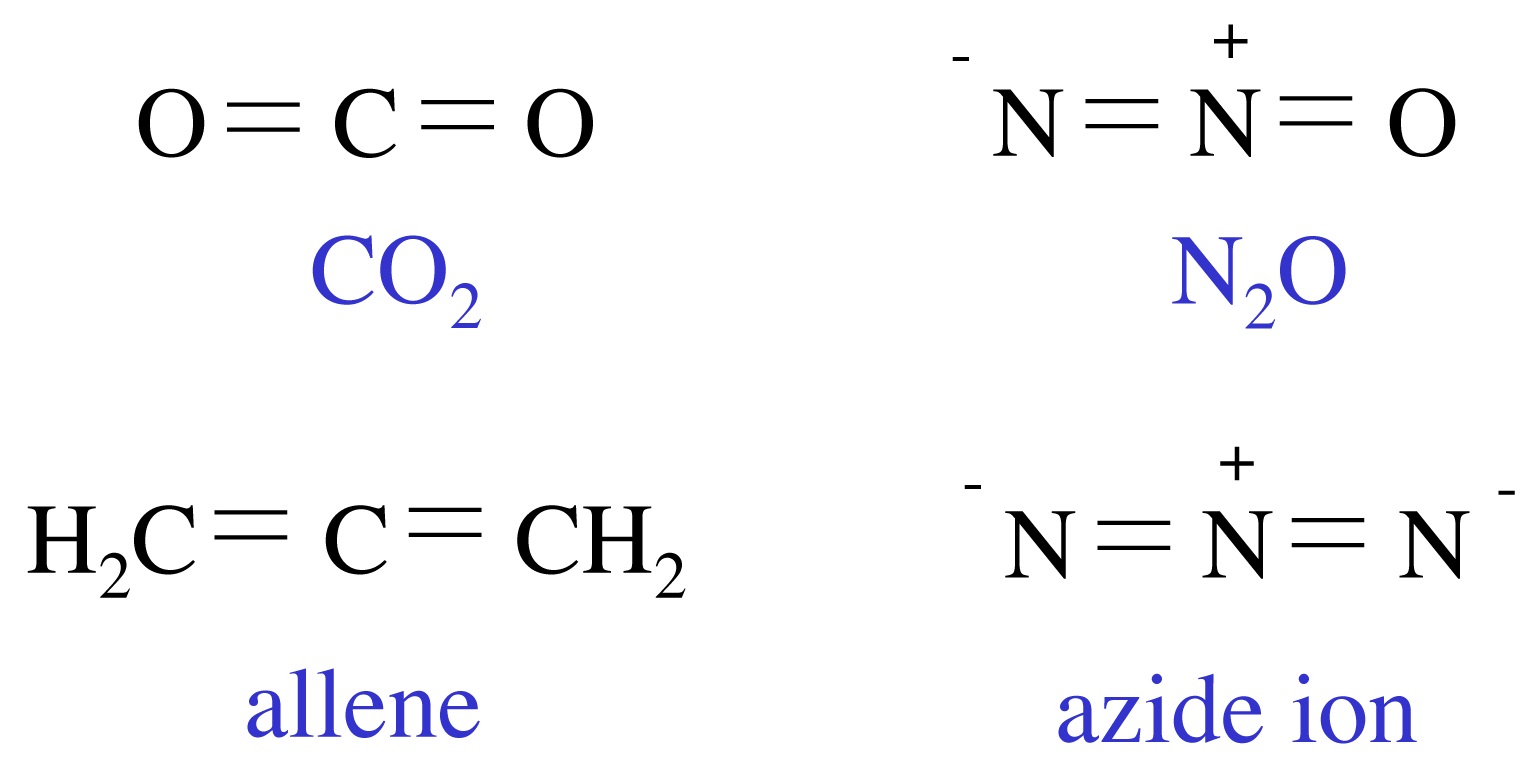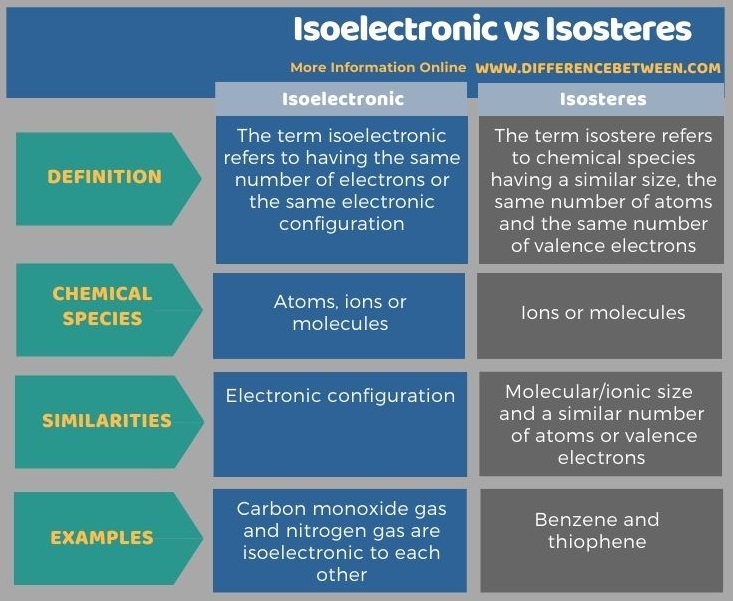Difference Between Isoelectronic and Isosteres
Table of Contents
The key difference between isoelectronic and isosteres is that the isoelectronic chemical species have similar electronic configurations whereas the isosteres are chemical species having a similar size, the same number of atoms and valence electrons.
The prefix “iso-” means that two or more chemical species have the same characteristic feature. Isoelectronic species and isosteres are two such types of features. However, these two terms are different from each other, depending on the feature that is considered to be compared between two or more chemical species.
CONTENTS
1. Overview and Key Difference
2. What is Isoelectronic
3. What are Isosteres
4. Side by Side Comparison – Isoelectronic vs Isosteres in Tabular Form
5. Summary
What is Isoelectronic?
The term isoelectronic refers to having the same number of electrons or the same electronic configuration. The chemical species that we are considering in this context include atoms, ions or molecules. These chemical species should have the same electronic structure of the same number of valence electrons in order to name them as isoelectronic species. In other words, this term refers to “equal electric” or “equal charge” feature. Typically, these chemical species show similar chemical properties as well because the chemical properties of chemical species are determined by the electronic configuration of the chemical species.
When considering some examples for isoelectronic chemical species, a common example would be He atom and Li+ (Lithium cation) ion where both chemical species have two electrons in their atoms/ion. Similarly, K+ (potassium cation) and Ca+2 (calcium cation) are isoelectronic as both these cations have the [Ne]4s1 electronic configuration. In addition to atoms/ion, we can also give some examples for molecules that are isoelectronic with each other, including carbon monoxide molecule and nitrogen gas molecule.

Figure 01: Examples of Isoelectronic Molecules
The concept of isoelectronic nature of chemical species is useful in predicting the properties and reactions of a chemical species. We can use this feature to identify atoms similar to hydrogen that has one valence electron and therefore are isoelectronic to hydrogen. Moreover, we can apply this concept to identify unknown or rare compounds depending on their electronic resemblance to a known/common chemical species.
What are Isosteres?
The term isostere refers to chemical species having a similar size, the same number of atoms and the same number of valence electrons. The chemical species we are considering in this context are molecules or ions. For example, benzene and thiophene are isosteric molecules. Generally, isosteric molecules have the same shape because of their identical electron arrangements. Often, these chemical species have similar electronic properties as well. The concept of isosteres was first developed by Irving Langmuir in 1919. Later, it was modified by Grimm.
What is the Difference Between Isoelectronic and Isosteres?
The key difference between isoelectronic and isosteres is that the isoelectronic chemical species have similar electronic configurations whereas the isosteres are chemical species having similar size, the same number of atoms and valence electrons. Moreover, the isoelectronic describe atoms, ions or molecules whereas the isosteres describe ions or molecules. For example, carbon monoxide gas and nitrogen gas are isoelectronic to each other while benzene and thiophene are isosteres.
The following infographic summarizes the differences between isoelectronic and isosteres in tabular form for side by side comparison.

Summary – Isoelectronic vs Isosteres
The term isoelectronic is different from the term isosteres because they describe two different features of chemical species. The key difference between isoelectronic and isosteres is that isoelectronic chemical species have similar electronic configurations whereas isosteres are chemical species having similar size, the same number of atoms and valence electrons.
Reference:
1. Helmenstine, Anne Marie. “Isoelectronic Definition.” ThoughtCo, Aug. 28, 2020, Available here.
Image Courtesy:
1. “Isoelectronic molecules” By Tem5psu – Own work (CC BY-SA 3.0) via Commons Wikimedia
ncG1vNJzZmivp6x7pbXFn5yrnZ6YsqOx07CcnqZemLyue8OinZ%2Bdopq7pLGMm5ytr5Wau2610qicpZ2Tqb%2BwusicZJqmlGK2tLvSrZyrnaNk